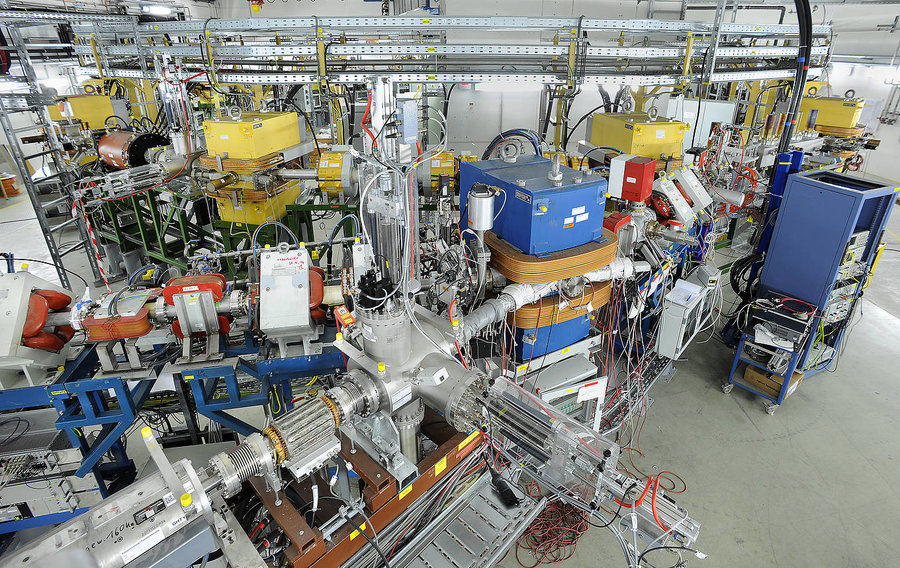First turn in FAIR’s first ring: Big step forward in installation of CRYRING ion storage ring
16.12.2016 |
The local accelerator that enables the ring to run independently has now been completed, as has the beamline that extends from the ESR to the CRYRING. Moreover, both of these systems have successfully sent ion beams to the CRYRING’s first diagnostic stations. The commissioning of the ring began in the summer of 2016. In the first step of this process, a group of researchers from the GSI accelerator team, the GSI research department for atomic physics, and the SPARC experiment collaboration successfully tested the beam transport line from GSI’s ESR to the first FAIR storage ring, the CRYRING. During the previous beam time period at GSI, scientists extracted completely ionized carbon ions (C6+ ions) from the ESR. They then channeled these particles to the first diagnostic station at the CRYRING. The test showed that the adjusted beamline from the ESR to Cave B (the location of the CRYRING) and the new septum magnet in the CRYRING are fully functional. The researchers also tested the beam diagnosis equipment and the FAIR-standard control hardware and software in actual beam operation.
A second beam time period took place in October/November. During this phase, the local source supplied a beam of hydrogen gas ions (H2+) that was propelled into the ring at 300 keV/u. The diagnostic systems detected this beam after one turn in the ring. This brought the first turn to a successful conclusion and demonstrated that all of the key elements work properly.
In the next step, the researchers will prepare the necessary ultra-high vacuum. The remaining ring installations — the electron cooler, in particular — will be put into operation next year. When the GSI accelerators recommence operations in 2018, the CRYRING will be able to carry out its first experiments with slow highly charged ions. In cooperation with other FAIR collaborations, the SPARC experiment collaboration is preparing many new experiments that use slow highly charged ions to investigate processes in atoms and nuclei as well as conduct research in biomolecular physics and the materials sciences.
More information:
- <link https: www.gsi.de cryring _top zum>More about CRYRING
- <link https: www.fair-center.eu news-events news-view article cryring.html _blank external-link-new-window external link in new>Delivery of CRYRING to Darmstadt
(<link https: www.gsi.de en start news details first-turn-in-fairs-first-ring-big-step-forward-in-installation-of-cryring-ion-storage-ring.htm external-link-new-window external link in new>via GSI press office)


